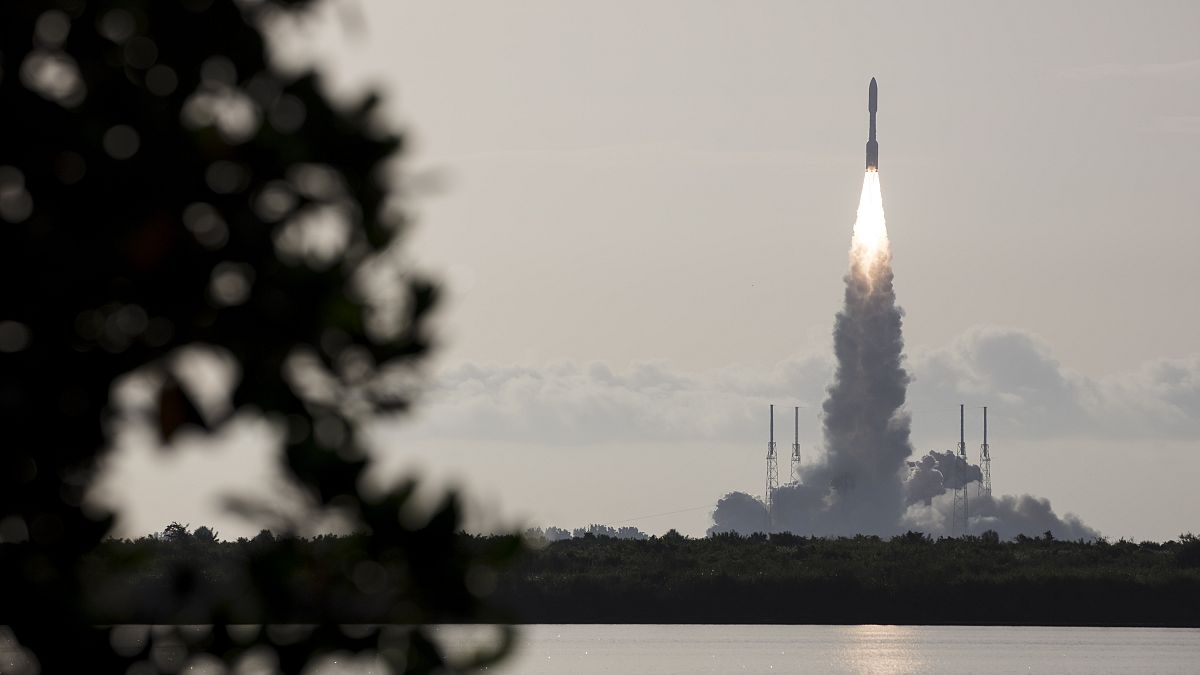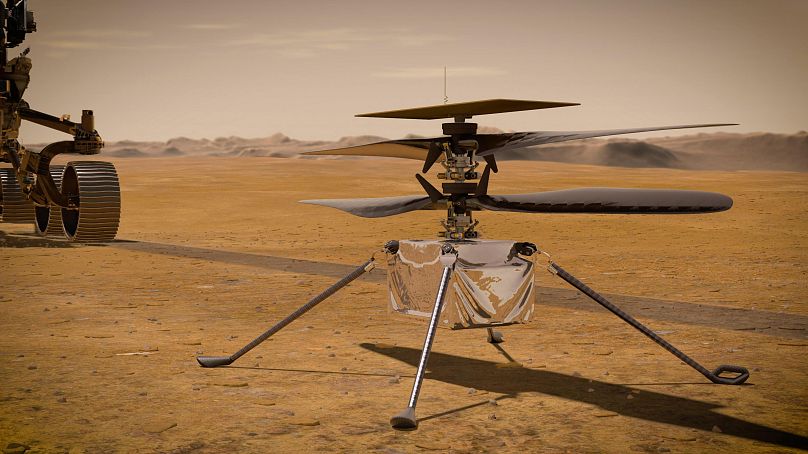The Perseverance rover will roam a crater on the Red Planet for at least one Mars year — about 687 days on Earth.
NASA's €2 billion mission to Mars is set to launch on Thursday with scientists hoping the Perseverance rover will uncover signs of ancient life on the Red Planet.
The Mars 2020 mission spacecraft that includes the Perseverance rover launched from Cape Canaveral, Florida at about 13:50 CET and will travel through space for seven months before landing on the Martian surface on February 18, 2021.
Perseverance — the largest, heaviest robotic Mars rover NASA has ever built — is to search for ancient microbial life. It will also study the planet's geology and climate.
Scientists hope this research will enable them to figure out why Mars — which formed from the same primordial stuff as Earth — ended up so different.
Perseverance will be landing in the Jezero Crater, a 45-km-wide giant impact basin just north of the Martian equator. NASA scientists believe the crater may have been an oasis in its distant past.
They said a river flowed there between 3 to 4 billion years ago and as such the delta could have preserved organic molecules and other potential signs of microbial life. Rock and soil samples will be brought back to Earth for further analysis.
The rover will roam the crater for at least one Mars year — about 687 Earth days — drilling to collect rock and soil samples to bring back to Earth for further analysis. It also boasts a record 19 cameras.
It will carry a small 1.8-kg helicopter named Ingenuity, which will be the first aircraft to fly in a controlled way on another planet.
Ingenuity's key objective is to demonstrate powered flight in the atmosphere of Mars, which is only 1 per cent as thick as that of Earth and where gravity is lower (about one-third that of our planet).
Perseverance will also carry spacesuit materials to Mars. The five samples, which include a piece of helmet visor, will be studied by an instrument called SHERLOC (Scanning Habitable Environments with Raman & Luminescence for Organics & Chemicals).
"The materials we're poking at the most are meant to be on the outer layer of a suit since these will be exposed to the most radiation," Amy Ross, an advanced spacesuit designer for NASA, explained.
"On Mars, radiation will break down the chemical composition of the materials, weakening their tensile strength. We want to figure out how long these materials will last. Do we need to develop new materials, or will these hang in there?" she added.

